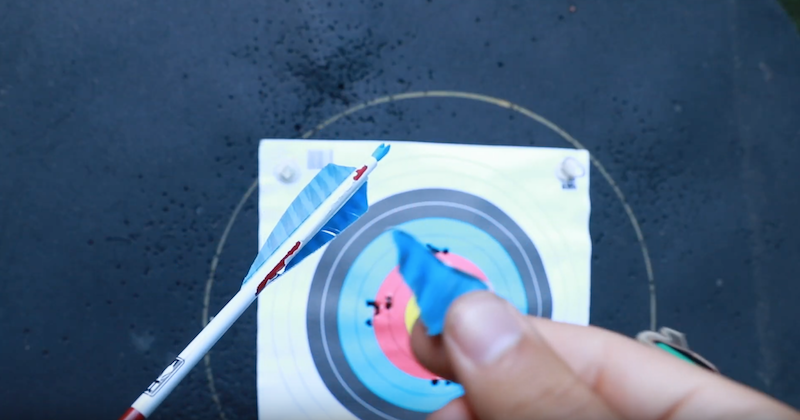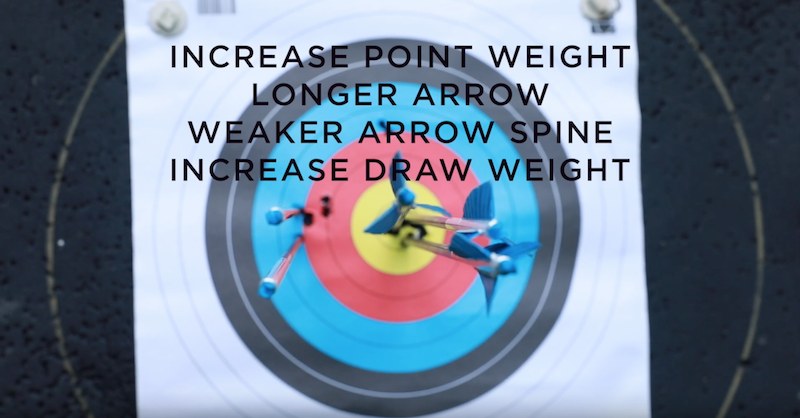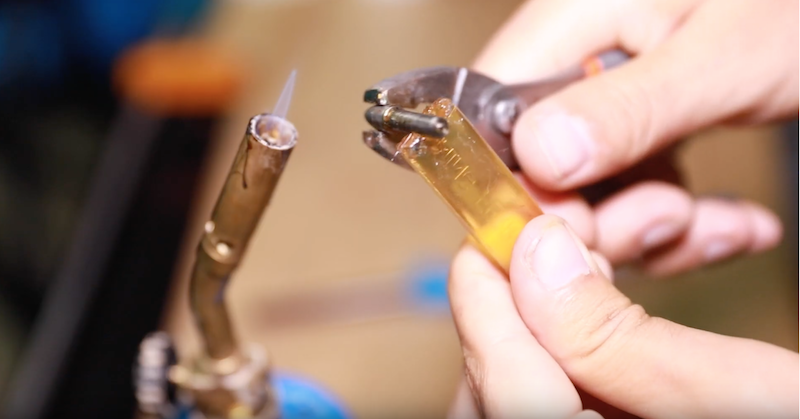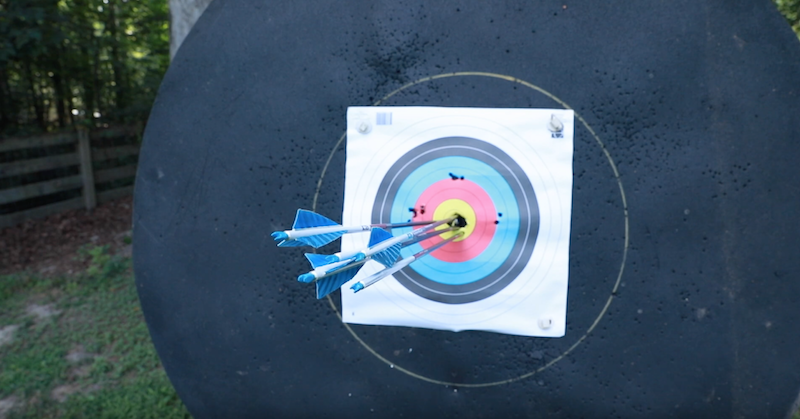Once your recurve or longbow has been set up by an archery pro at a nearby shop, your next step is to tune your arrows.
When buying your bow, also ask the archery pro to help you select arrows with a shaft spine that matches your draw length and draw weight. Without any fine-tuning, these arrows will likely shoot OK, and you can use them until your form improves. Once your shooting form is consistent, you’ll want to get more from your equipment.
That’s when a tuned setup shines. You’ll enjoy increased accuracy, forgiveness and beautiful arrow flight. To tune your arrows, you’ll shoot with and without fletching to evaluate their “tune.”
Step 1: Make a bare shaft.

To make a bare shaft, remove the fletching from one arrow with a sharp knife. If you want the best possible tuning results, weigh your fletching and then weigh an equal amount of painter’s tape. Then wrap the painter’s tape onto the shaft where your fletching would attach.
Step 2: Shoot your bare shaft and fletched arrows.

Shoot your bare shaft and three fletched arrows at about 10 yards. Do your best to execute good shots, especially with the bare shaft. Fletched arrows are much more forgiving of small release errors.
Step 3: Evaluate the results.

Note where your bare shaft hits the target in relation to the fletched arrows. For a right-handed archer, if the bare shaft hits left of your arrows, your shaft spine is too stiff. If the bare shaft hits to the right, its spine is weak.
If you shoot left-handed, a bare-shaft impact to the left means its spine is weak. A right impact means its spine is stiff.
If your bare shaft hits low, your nocking point is too high. If your bare shaft hits high, your nocking point is too low.
Step 4: Make your adjustments.

Your first adjustment is to get your bare shaft’s impact point on the same horizontal plane as your arrows. Barely change your nocking point and shoot your arrows again to check the adjustment. Make changes in small increments and keep checking the result.
Once the bare shaft consistently hits on the same horizontal plane as your fletched arrows, begin correcting the left or right impact point.
If your arrow spine is too stiff, the easiest way to weaken the spine is to increase the point’s weight. You can also weaken the spine by increasing your draw weight, shooting longer arrows, or buying arrows with a weaker spine.
If your arrow spine is weak, you can decrease its point weight, shorten the arrow by a ¼-inch, decrease your draw weight, or buy arrows with a stiffer spine. As with the nocking point, make these adjustments in small increments.
Step 5: Shoot again to check your changes.

Shoot your bare shafts and fletched arrows at 10 yards. If your bare shaft groups with your arrows, step back to 15 yards and shoot again. Continue bare-shaft tuning until you reach the distance where you no longer get consistent bare-shaft impacts. The farther back you go, the smaller the changes you’ll need to move the bare shaft into your fletched group.
If you hit a snag while bare-shaft tuning, revisit the archery shop. The shop’s pro can provide excellent help throughout the process. You can find a nearby shop here.




